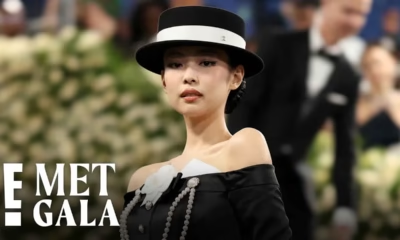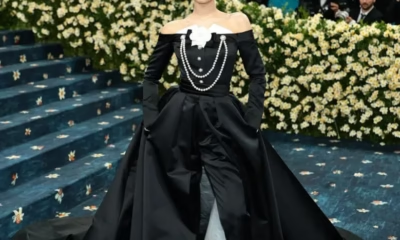ENTERTAINMENT
Met Gala 2025: Celebrating Black Style and the Power of Tailored Expression
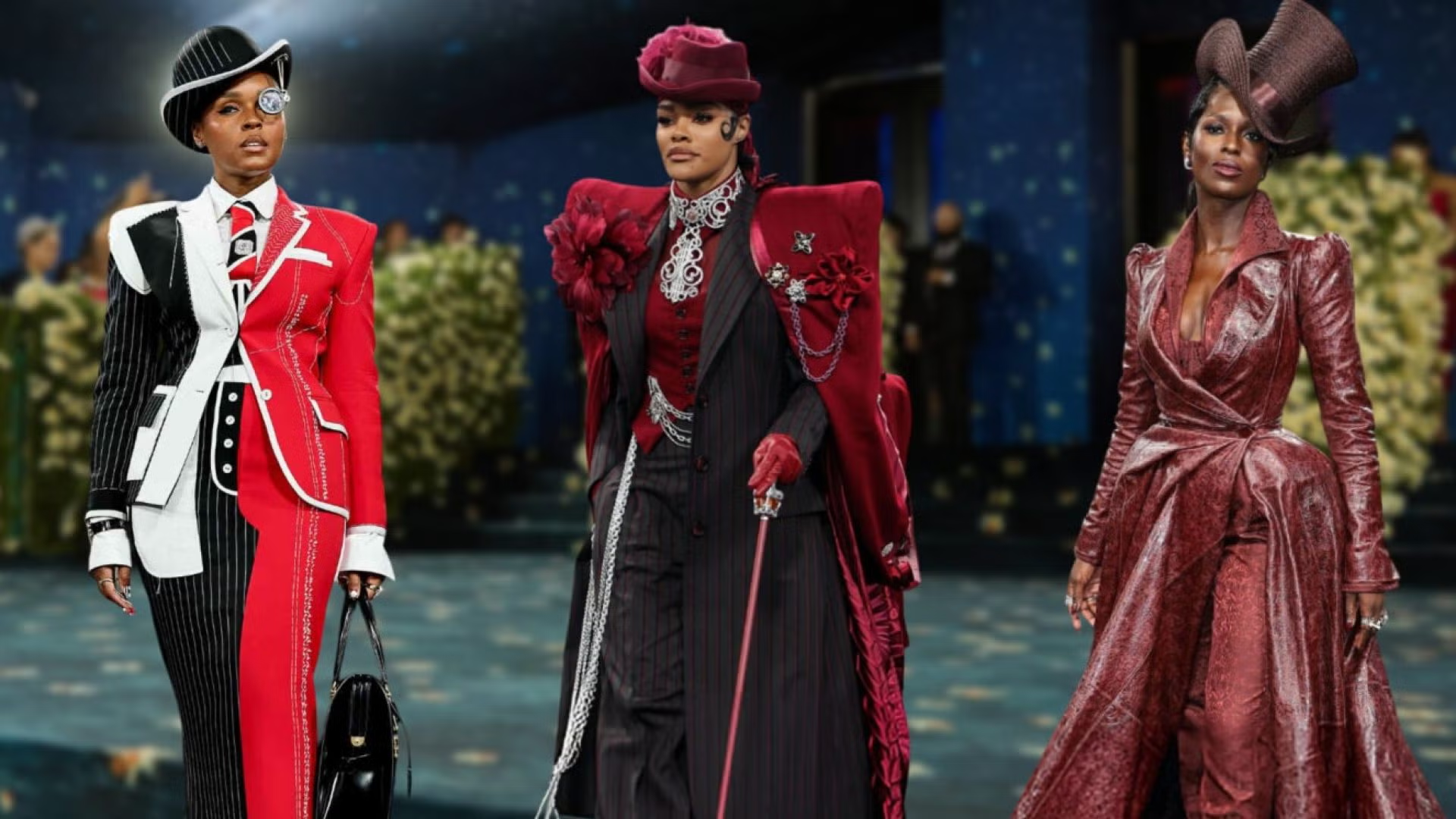
Every spring, the Met Gala stands as the pinnacle of fashion spectacle. In 2025, however, the event transcended the realm of glamour to deliver profound cultural resonance. Building on the Costume Institute’s “Sleeping Beauties: Reawakening Fashion” exhibition, the gala homed in on the sub-theme “Superfine: Tailoring Black Style.” It became more than a display of artistry; it was a celebration of Black menswear’s enduring power, identity, and history.
A Curated Tribute: “Superfine: Tailoring Black Style”
Within the broader “Sleeping Beauties” motif, “Superfine” offered a focused exploration of how Black tailoring and dandyism have reshaped identity and style over centuries. Drawing inspiration from Monica L. Miller’s seminal work on Black dandyism, the exhibition traced evolution from 18th-century portraits to modern streetwear. It presented garments and imagery showcasing how fashion has served as assertion, empowerment, resistance, and resilience for Black men and masculine-identified individuals.
A Red Carpet with Meaning
The red carpet became a canvas of intentional styling, rich symbolism, and personal narratives. The dress code—interpreted through the idea of “The Garden of Time”—echoed themes of renewal and timeless elegance rooted in Black tailoring traditions. Guests embraced the challenge not for display, but for homage; their ensembles carried depth, history, and creativity.
Co-Chairs & Honorary Figures:
-
Colman Domingo, actor and sartorial leader
-
A$AP Rocky, stylistic innovator
-
Pharrell Williams, menswear visionary
-
Lewis Hamilton, fashion-forward athlete
-
Anna Wintour, guiding figure of the Gala’s legacy
-
LeBron James, global ambassador for cultural empowerment
Their collective presence emphasized the evening’s purpose: elevate, represent, and celebrate.
Highlight Looks That Spoke Louder Than Words
-
Tracee Ellis Ross shined in a blossom-hued pantsuit by Marc Jacobs, crowned with a wide-brimmed hat. The look honored classic tailoring with an ultra-modern flourish.
-
Rihanna surprised the world with a pregnancy reveal beneath a sleek black satin suit dress, designed by Marc Jacobs, accented with gold—a powerful statement of Black maternity grace.
-
Colman Domingo brought theater to the carpet with a live-transforming ensemble by Black tailors, visually articulating reinvention and legacy.
-
Diana Ross embodied regal heritage in a silver embroidered cape, her garment inscribed with the names of her children and grandchildren—fashion as family history.
-
Janelle Monáe offered visionary dual-tone tailoring in black and white, styled with optical illusions—tying historical awareness to futuristic elegance.
“Superfine” Through a Curatorial Lens
Curator Andrew Bolton ensured that “Superfine” did more than just exhibit—it contextualized. Displayed were:
-
18th-century attire of Black individuals adorned in Western formalwear
-
Harlem Renaissance tailoring exemplifying self-representation
-
Costumes worn by icons like James Baldwin and André Leon Talley
-
Contemporary streetwear reimagined on museum plinths through brands like Off-White and Telfar
Together, these pieces underscored how Black tailoring has always been a site of societal navigation, defiance, and artistry.
Representation Rooted in Inclusion
Unlike previous editions criticized for superficial diversity, the 2025 Gala embodied authentic representation. A predominantly Black and BIPOC guest roster celebrated diasporic style. Black designers—Kerby Jean-Raymond (Pyer Moss), Wales Bonner, and Tolu Coker among them—stood shoulder-to-shoulder with heritage fashion houses, signaling both visibility and equity.
Widespread Cultural Echoes
This edition resonated deeply. Social media buzz centered not on spectacle but insight—from design appreciation to cultural discourse. Fashion media celebrated the gala’s depth, calling it one of the most significant in years. Audiences responded with reflections on history, identity, and legacy, forging a shared understanding of fashion as more than a visual indulgence.
A Touch of Critique
No cultural moment is without scrutiny. Some pointed out the risk of singularized celebration—wondering whether a high-gloss gala can truly alter fashion’s systemic imbalances. A few guests were seen in off-theme attire that raised questions about performative alignment. Yet these critiques were tempered by the overall earnestness and precision with which the evening was composed.
What This Means for Fashion’s Future
The 2025 Gala didn’t just stop the show—it reset expectations. Key takeaways for the industry include:
-
Deep investment in Black designers and narrative authority
-
Embracing theme-driven, culturally informed design choices
-
Integrating equity not just on visible surfaces but in decision-making structures
-
Cultural storytelling as couture, not curation
The Gala reaffirmed fashion’s capacity for consciousness—not just craftsmanship.
Conclusion: The Met Gala as Cultural Catalyst
The 2025 Met Gala was more than a celebration—it was a redefinition of Black style, placing it firmly at the intersection of heritage and innovation. This year’s event offered more than dazzling couture; it delivered a cultural statement, reminding the world that fashion has the power to remember, reimagine, and resonate far beyond the red carpet.
By honoring Black tailoring, the Gala illuminated the artistry and history embedded in every stitch, seam, and silhouette. It showcased fashion not solely as visual spectacle but as a living archive—a medium through which identity is claimed, resistance is expressed, and stories are told. The garments on display carried generations of resilience and creativity, drawing from centuries of influence while speaking boldly to the present and future.
The night’s looks balanced precision with poetry. Tailoring was not merely technical—it became narrative. The designs honored tradition while pushing boundaries, blending historical elegance with contemporary vision. Attendees embraced the theme with depth, creating a dialogue between past and present that celebrated Black style as both a personal and collective legacy.
In doing so, the Gala reaffirmed that style is far more than what we wear. It is how we engage with memory, reckon with legacy, and envision belonging. Fashion, in this context, became a bridge—a way to carry history forward while crafting new spaces for representation and creativity.
This edition of the Met Gala will be remembered as a turning point, where couture stepped into its role as both art and archive. It was a night when the brightest spotlight in fashion illuminated authenticity, inclusion, and the enduring power of storytelling stitched into the very fabric of style.
ENTERTAINMENT
Court Prevents K-pop Group NewJeans from Independence
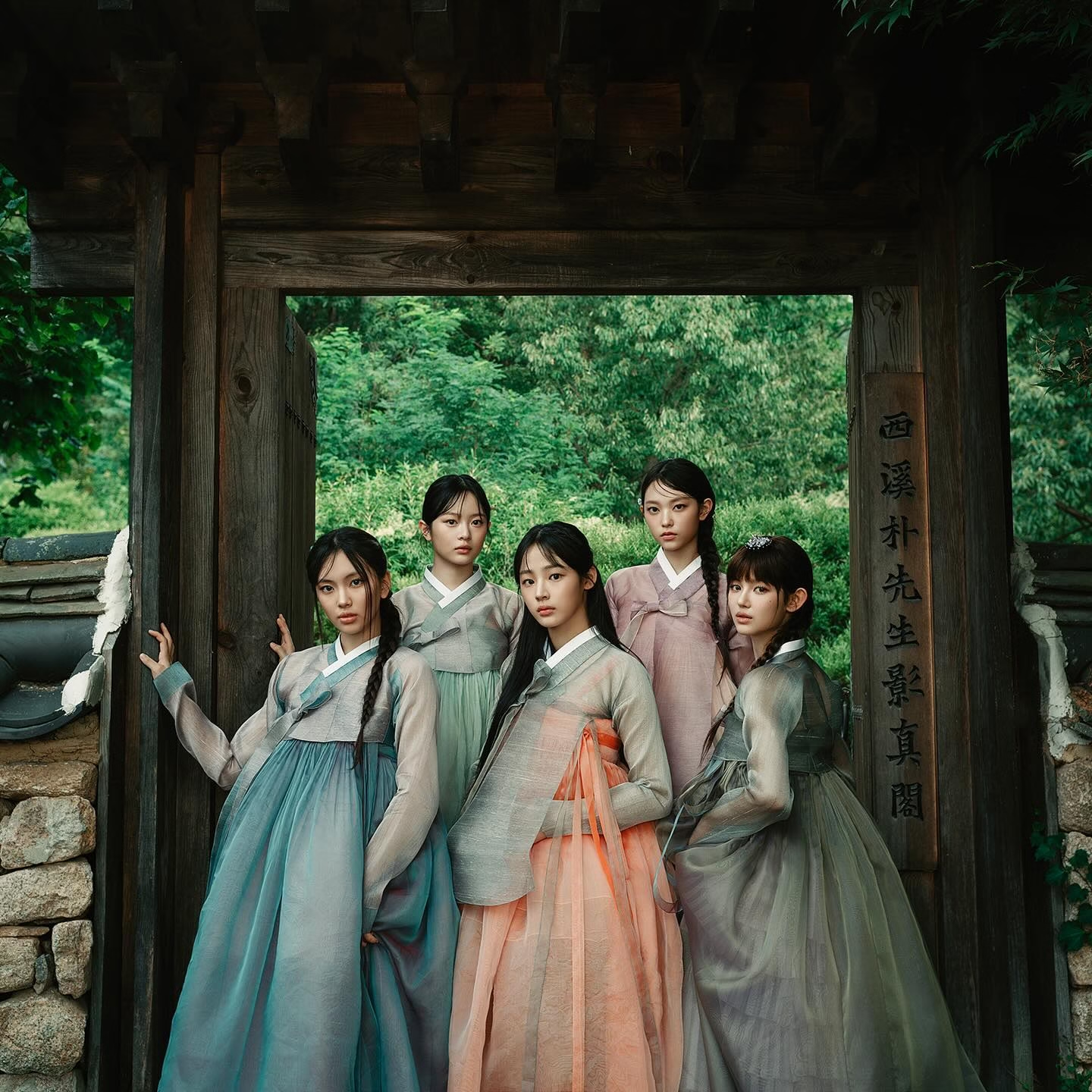
In a landmark ruling that has sent shockwaves through the K-pop industry, a South Korean court has blocked the popular girl group NewJeans from pursuing independence from their management company, HYBE. The decision, which comes amid a heated legal battle between the group and their label, has sparked widespread debate about the rights of artists, the power of entertainment agencies, and the future of K-pop. This ruling not only impacts NewJeans but also sets a precedent for other K-pop groups and artists seeking greater creative and financial autonomy.
Background of the Dispute
NewJeans, a rising star in the K-pop scene, debuted in 2022 under HYBE, one of South Korea’s largest entertainment companies. Known for their fresh sound, unique style, and relatable lyrics, the group quickly gained a massive following both domestically and internationally. However, behind the scenes, tensions were brewing between the members of NewJeans and their management.
The group’s members reportedly sought greater control over their music, image, and career trajectory, citing creative differences and dissatisfaction with HYBE’s handling of their brand. In early 2023, NewJeans filed a lawsuit against HYBE, seeking to terminate their contract and operate as an independent entity. The group argued that their contract was overly restrictive and did not allow them to fully express their artistic vision.
HYBE, on the other hand, countered that the contract was fair and legally binding. The company emphasised the significant investment it had made in NewJeans’ training, production, and promotion, arguing that the group’s success was a direct result of HYBE’s resources and expertise. HYBE also warned that allowing NewJeans to go independent could set a dangerous precedent, potentially destabilising the K-pop industry.
The Court’s Ruling
After months of legal proceedings, the South Korean court ruled in favour of HYBE, effectively preventing NewJeans from terminating their contract and operating independently. The court cited the terms of the contract, which it deemed legally valid, and emphasised the importance of upholding contractual agreements in the entertainment industry.
In its ruling, the court acknowledged the group’s desire for creative freedom but stated that such aspirations must be balanced against the legal and financial obligations outlined in their contract. The court also noted that HYBE had fulfilled its responsibilities as a management company, providing NewJeans with the resources and support needed to achieve their success.
The decision has been met with mixed reactions. While HYBE and its supporters have hailed the ruling as a victory for the stability of the K-pop industry, critics argue that it undermines the rights of artists and perpetuates a system that prioritises corporate interests over individual creativity.
Implications for NewJeans
For NewJeans, the court’s ruling is a significant setback. The group’s members had hoped to gain greater control over their music and careers, but they will now remain under HYBE’s management for the duration of their contract. This could lead to ongoing tensions between the group and their label, potentially affecting their creative output and public image.
The ruling also raises questions about the group’s future. Will NewJeans be able to reconcile their differences with HYBE and continue to thrive under the company’s management? Or will the legal battle and its aftermath hinder their growth and success? These are critical questions that only time will answer.
Broader Impact on the K-pop Industry
The court’s decision has far-reaching implications for the K-pop industry as a whole. For decades, K-pop has been dominated by a handful of major entertainment companies, often referred to as the “Big 4”: HYBE, SM Entertainment, YG Entertainment, and JYP Entertainment. These companies wield immense power, controlling every aspect of an artist’s career, from training and production to marketing and distribution.
While this system has produced some of the biggest names in global music, it has also been criticised for its rigid structure and lack of transparency. Many artists, particularly those who have achieved significant success, have expressed a desire for greater autonomy and a larger share of the profits generated by their work.
The NewJeans case highlights the challenges faced by artists seeking independence in an industry dominated by powerful corporations. It also underscores the need for greater legal protections for artists, particularly when it comes to contract negotiations and disputes.
The Debate Over Artist Rights
The court’s ruling has reignited the debate over artist rights in the K-pop industry. Supporters of NewJeans argue that artists should have the freedom to pursue their creative vision and control their careers. They point to the success of independent artists in other parts of the world as evidence that the traditional K-pop model is not the only path to success.
On the other hand, proponents of the current system argue that entertainment companies play a crucial role in the success of K-pop groups. They contend that the rigorous training, high-quality production, and extensive marketing provided by these companies are essential for achieving global success. Without the support of a major label, they argue, even the most talented artists may struggle to reach their full potential.
The Role of Contracts in the Entertainment Industry
The NewJeans case also highlights the importance of contracts in the entertainment industry. Contracts serve as the foundation of the relationship between artists and their management companies, outlining the rights and responsibilities of both parties. However, these contracts are often complex and heavily weighted in favour of the companies, leaving artists with limited bargaining power.
In recent years, there have been calls for greater transparency and fairness in contract negotiations. Some advocates have suggested the introduction of standardised contracts or the establishment of an independent body to oversee disputes between artists and management companies. These measures could help level the playing field and ensure that artists are treated fairly.
The Future of K-pop
The NewJeans case highlights the challenges and opportunities in K-pop’s evolving landscape. Although the court’s ruling hindered the group’s independence, it ignited a crucial conversation about the industry’s future. One potential shift is toward an artist-centric model, granting greater control and profit shares to artists. This could lead to the rise of independent labels, flexible contracts, or platforms connecting artists directly with fans. Conversely, major entertainment companies may continue to dominate, providing resources for polished, commercial success but limiting individual creativity. Transitioning to a balanced system requires addressing artist rights, fostering innovation, and ensuring fair practices. Ultimately, the industry must adapt to meet both artistic aspirations and commercial demands, shaping a sustainable future for K-pop.
Conclusion
The court’s decision to prevent NewJeans from going independent marks a pivotal moment in the K-pop industry. While it reinforces the power of major entertainment companies, it also highlights the growing demand for greater artist rights and creative freedom. As the industry continues to grapple with these issues, the NewJeans case serves as a reminder of the need for balance between corporate interests and individual aspirations. Whether this ruling will lead to meaningful change or further entrench the status quo remains to be seen. What is clear, however, is that the conversation about the future of K-pop is far from over.
ENTERTAINMENT
What Are Coachella Co-Chairs: The Visionaries Behind the Iconic Festival

Coachella Valley Music and Arts Festival stands as one of the world’s most iconic music events, largely due to its visionary leadership. While the festival’s organizational structure doesn’t formally define “co-chairs,” this term typically refers to the core team guiding its direction, particularly Paul Tollett and Goldenvoice’s executive leadership. Since its inception, these key figures have shaped Coachella’s evolution from a risky desert concert into a global phenomenon.
Initially, the festival struggled financially, but through strategic planning, it gradually became profitable. Not only did the team focus on musical curation, they also prioritized creating immersive experiences. As a result, Coachella transformed into more than just a concert series – it became a cultural touchstone. Furthermore, their willingness to adapt has kept the festival relevant across decades.
However, maintaining Coachella’s authenticity remains crucial. For instance, while expanding its lineup diversity, the organizers have preserved its artistic integrity. Similarly, they’ve balanced commercial success with underground credibility. Looking ahead, the co-chairs continue facing challenges, yet their track record suggests innovative solutions will emerge.
Ultimately, Coachella’s success stems from this leadership’s unique vision. Therefore, as the festival evolves, its foundational principles will likely endure. In the end, the co-chairs’ decisions continue shaping not just a music event, but a cultural institution that redefines live entertainment year after year. Their ability to anticipate trends while honoring Coachella’s essence explains why it remains unparalleled in the festival landscape.
1. The Founders: Paul Tollett and Rick Van Santen
Coachella was co-founded in 1999 by Paul Tollett and Rick Van Santen, two executives from Goldenvoice, a Southern California-based concert promotion company. Their vision was to create a festival that blended diverse musical genres, cutting-edge art installations, and a unique desert experience.
Paul Tollett: The Driving Force
Paul Tollett is widely regarded as the festival’s principal architect. He has served as Coachella’s president and remains its most visible leader. Tollett’s approach to booking artists prioritizes artistic credibility over commercial appeal, which has helped Coachella maintain its reputation as a tastemaker event. His philosophy is rooted in creating an immersive experience, as he once stated:
“We wanted it to be far. So you surrender. You can’t leave your house, see a couple bands, and be back home that night. We want you to go out there, get tired, and curse the show by Sunday afternoon. That sunset, and that whole feeling of Coachella hits you.” 4
Tollett’s leadership has been instrumental in securing legendary headliners (such as Beyoncé, Prince, and Radiohead) and fostering unique collaborations (like the 2024 Lana Del Rey and Billie Eilish duet) 2. He also pioneered the two-weekend format in 2012 to meet overwhelming demand.
Rick Van Santen: The Late Co-Founder
Rick Van Santen, who passed away in 2004, was equally crucial in Coachella’s early years. As Goldenvoice’s co-president, he helped negotiate deals with artists and venues, ensuring the festival’s survival after its financially shaky beginnings. The 1999 inaugural edition lost $850,000, but Van Santen and Tollett persisted, eventually turning Coachella into a global phenomenon 4.
2. Goldenvoice and AEG Presents: The Organizational Backbone
Goldenvoice, now a subsidiary of AEG Presents, operates as the festival’s organizing body. While Tollett remains the face of Coachella, other key executives contribute to its success:
Current Leadership
- Skip Paige (Goldenvoice Executive): Oversees logistics, partnerships, and venue operations.
- Jennifer Yacoubian (Talent Buyer): Plays a pivotal role in artist bookings and stage curation.
- Raymond Roker (Creative Director): Leads branding, digital content, and visual aesthetics, including the festival’s iconic art installations.
These leaders collaborate to ensure Coachella’s seamless execution, from ticketing (via AXS) to safety protocols and sustainability initiatives 15.
3. The Co-Chairs’ Impact on Coachella’s Evolution
A. Expanding Beyond Music
Under Tollett’s guidance, Coachella has grown into a multidisciplinary event featuring:
- Large-Scale Art Installations: Collaborations with artists like Poetic Kinetics (the famous “Spectra” tower).
- Gourmet Food Offerings: Curated by top L.A. chefs 10.
- Fashion and Culture: The festival has become a runway for trends, influencing global style.
B. Innovative Ticketing and Accessibility
The co-chairs have refined Coachella’s ticketing model, introducing:
- Wristband Registration: To combat scalping, wristbands must be registered to the attendee’s name 1.
- Accessibility Initiatives: ADA-compliant viewing areas, shuttle services, and sign-language interpreters 3.
C. Embracing Digital and Global Audiences
- Livestreaming Partnerships: YouTube broadcasts performances worldwide, expanding Coachella’s reach 10.
- Fortnite Collaborations: Virtual concerts and in-game Coachella content engage younger fans 2.
4. Challenges and Controversies
Despite its success, Coachella’s leadership has faced criticism:
- High Ticket Prices: GA passes now exceed $600, raising concerns about affordability 8.
- Cultural Appropriation: Some argue the festival commodifies Indigenous and minority cultures.
- Environmental Impact: The desert location strains local resources, though sustainability efforts are increasing.
Tollett has addressed these issues incrementally, such as by banning single-use plastics and partnering with environmental groups.
5. The Future of Coachella Under Its Co-Chairs
Looking ahead, Tollett and Goldenvoice aim to:
- Diversify Lineups: More international and genre-blending acts (e.g., K-pop’s BLACKPINK in 2023) 6.
- Enhance Camping Experiences: New options like “Sunset Van Camp” cater to luxury attendees 5.
- Pioneer New Tech: Augmented reality stages and NFT integrations are being explored.
Conclusion
Initially launched as a high-risk venture in the California desert, Coachella has since grown into a global cultural phenomenon under the leadership of co-chairs Paul Tollett and the Goldenvoice executive team. While the festival faced early financial struggles, their strategic vision gradually transformed it into an unparalleled success. Not only did they blend artistic curation with business savvy, but they also maintained an adaptable approach that keeps Coachella at the forefront of music festivals.
From its humble beginnings, the team prioritized innovation, first by booking groundbreaking headliners and then expanding into immersive art installations. As a result, Coachella became more than just a concert—it evolved into a multi-sensory experience. Furthermore, their willingness to embrace change, whether through live-streaming or diverse lineup curation, ensures its continued relevance.
However, despite its massive growth, the organizers have carefully preserved Coachella’s authentic spirit. For instance, they’ve maintained the festival’s indie roots while integrating mainstream appeal. Similarly, sustainability initiatives now complement its artistic ambitions, proving that evolution doesn’t require sacrificing core values.
Looking ahead, Tollett and his team face new challenges, yet their track record suggests they’ll continue balancing innovation with tradition. After all, their ability to anticipate trends—from genre diversity to experiential activations—has kept Coachella ahead of competitors. Meanwhile, rival festivals emerge, but none have matched its cultural impact.
Ultimately, Coachella’s legacy stems from this leadership’s unique alchemy of risk-taking and reverence for music culture. Therefore, as the festival evolves, its foundation—built on artistic integrity and bold experimentation—will likely endure. In the end, that’s why Coachella remains not just a festival, but a defining force in global entertainment
For further details on Coachella’s operations, check its official FAQ
ENTERTAINMENT
The Rise of 7_jgray: A Deep Dive into the Influencer Phenomenon

In today’s digital age, social media influencers have risen to become the new generation of celebrities. Standing out in this competitive landscape is 7_jgray, an emerging content creator who has captured the attention of audiences worldwide. With a distinctive style, authentic personality, and rapidly expanding online presence, 7_jgray represents the modern success story in influencer culture.
This in-depth exploration examines what makes 7_jgray’s digital footprint so remarkable. We’ll analyse their unique content strategy, engagement techniques, and the smart decisions that have propelled their growth across platforms. From viral moments to community building, 7_jgray’s approach offers valuable lessons for both aspiring creators and social media enthusiasts.
Whether you’re a dedicated follower, a fellow content creator looking for inspiration, or simply curious about the mechanics of online influence, this profile reveals why 7_jgray has become one to watch in the ever-changing world of social media. Their journey demonstrates how authenticity, consistency, and audience connection can transform an ordinary account into a powerful digital brand.
Who Is 7_jgray?
It is a rising social media influencer whose content spans multiple platforms, including Instagram, TikTok, Twitter, and YouTube. The username suggests potential ties to sports—possibly referencing an athlete or fan—but their exact niche remains versatile. They could be a gaming streamer, lifestyle vlogger, or meme creator, depending on their content style.
What makes 7_jgray stand out is their adaptability. Whether posting sports highlights, gaming clips, fashion content, or viral trends, they maintain strong audience engagement. Their success likely stems from a mix of authenticity, consistent posting, and smart use of platform-specific features. While their true focus varies, It’s growing influence proves one thing: in today’s digital landscape, versatility wins. By staying relevant and interactive, they’ve built a loyal following—making them a creator to watch.
Possible Niches for 7_jgray:
- Sports Enthusiast – If the username references an athlete (like a football or basketball player), 7_jgray might share highlights, analysis, or fan interactions.
- Gaming Influencer – Many usernames with numbers and abbreviations belong to gamers who stream or post gameplay clips.
- Lifestyle & Fashion – Some influencers build their brand around personal style, daily routines, or motivational content.
- Memes & Viral Content – If 7_jgray focuses on humour, their page could be a hub for trending memes and relatable posts.
Without direct access to their profile, we can speculate that 7_jgray has cultivated a dedicated following by consistently delivering content that resonates with their audience.
The Growth Strategy Behind 7_jgray’s Success
Building a strong social media presence doesn’t happen overnight. Influencers like 7_jgray employ several key strategies to grow their brand:
1. Consistent Posting Schedule
Audiences engage with creators who post regularly. Whether it’s daily tweets, Instagram stories, or YouTube uploads, consistency keeps followers coming back.
2. Authenticity & Relatability
People follow influencers who feel genuine. If 7_jgray shares personal stories, behind-the-scenes moments, or unfiltered opinions, this likely strengthens their connection with fans.
3. Leveraging Trends & Challenges
Staying relevant means jumping on viral trends. If 7_jgray participates in popular challenges, uses trending sounds, or comments on current events, they maintain visibility.
4. Engagement with Followers
Replying to comments, hosting Q&As, and creating polls fosters community. A loyal fanbase is more likely to share and promote content.
5. Cross-Platform Promotion
If 7_jgray is active on multiple platforms (e.g., TikTok, Instagram, Twitter), they likely cross-promote content to maximise reach.
Analyzing 7_jgray’s Content Style
While specifics depend on their niche, successful influencers often follow these content principles:
A. High-Quality Visuals
Every post—whether photo, video, or graphic—demands high-quality editing and strong aesthetics. Sharp visuals grab attention, boost engagement, and elevate your brand. In today’s crowded digital space, professional presentation separates amateurs from influencers. Invest in editing tools, master composition, and maintain visual consistency to make your content stand out.
B. Storytelling
Every post holds storytelling potential. A gym selfie chronicles fitness progress. A gaming screenshot captures skill development. A 15-second vlog shares daily wins. These micro-narratives build connection and keep followers invested. Master the art of compact storytelling – your audience will remember the journey, not just individual posts.
C. Interactive Elements
Interactive features like polls, quizzes, and TikTok duets transform passive viewers into active participants. These tools spark conversations, build community, and give followers a voice in your content. By encouraging participation, you create memorable experiences that boost loyalty and keep audiences coming back for more. Engagement = lasting connections.
D. Collaborations
Influencer collaborations multiply reach by tapping into new audiences. Cross-promotions, shoutouts and co-created content act as growth accelerators. 7_jgray’s potential collabs likely fuel their rapid rise, proving that strategic partnerships create win-win exposure. The right alliance can skyrocket visibility overnight.
The Impact of 7_jgray
Influencers shape culture, trends, and even consumer behaviour. If 7_jgray has a substantial following, their impact might include:
- Brand Partnerships – Companies may collaborate with them for promotions.
- Community Influence – Their opinions could sway fan discussions on sports, gaming, or lifestyle topics.
- Monetisation – Through ads, sponsorships, or merchandise, 7_jgray could be turning their online presence into a revenue stream.
Challenges Faced by Influencers Like 7_jgray
Despite success, influencers encounter obstacles:
- Algorithm Changes – Social media platforms frequently update algorithms, affecting visibility.
- Online Toxicity – Hate comments and trolling are common struggles.
- Burnout – Constant content creation can lead to exhaustion.
How 7_jgray navigates these challenges could determine their long-term sustainability.
Future Prospects for 7_jgray
What’s next for this influencer? Potential paths include:
- Expanding to New Platforms (e.g., Twitch for gaming, Patreon for exclusive content).
- Launching a Personal Brand (merch, eBooks, or courses).
- Transitioning into Mainstream Media (acting, hosting, or sports commentary).
Conclusion: Why 7_jgray Matters
7_jgray embodies the modern digital creator—versatile, engaging, and impactful. First, their success stems from adaptability, allowing them to thrive across platforms. Additionally, their content blends authenticity with trend awareness, keeping followers hooked. Moreover, consistency plays a key role; regular posts maintain audience interest. For instance, whether through humour, sports, or lifestyle posts, 7_jgray connects deeply with fans.
Furthermore, their engagement strategy sets them apart. By replying to comments and hosting Q&As, they build loyalty. Similarly, collaborations with other influencers expand their reach. However, challenges like algorithm changes and burnout test their resilience. Despite this, their growth continues, proving their strategic edge.
Ultimately, 7_jgray’s journey teaches valuable lessons. From authenticity to smart monetisation, they showcase the blueprint for digital success. Therefore, whether you’re an aspiring creator or a curious observer, their story offers inspiration. In conclusion, 7_jgray isn’t just a name—they’re a case study in influence done right.
-

 EDUCATION3 months ago
EDUCATION3 months agoHCOOCH, CH₂, and H₂O: Key Molecules in Chemistry and Life
-

 BLOG1 month ago
BLOG1 month agoTeenthailand_11_SC1: Unveiling Thailand’s Youth Culture
-

 BLOG2 months ago
BLOG2 months agoTheapknews.shop Health: Your Gateway to Wellness and Tech
-

 EDUCATION5 months ago
EDUCATION5 months agoQawerdehidom: Origins, Principles, and Modern Applications
-

 BLOG5 months ago
BLOG5 months agoPO18: A Comprehensive Guide to Its Meaning and Applications
-

 EDUCATION3 months ago
EDUCATION3 months agoNowCollege 1v1: Redefining Personalized Higher Education
-

 EDUCATION5 months ago
EDUCATION5 months agoJollyJerk.com: The Curious Case of an Internet Alias and Its Cultural Significance
-
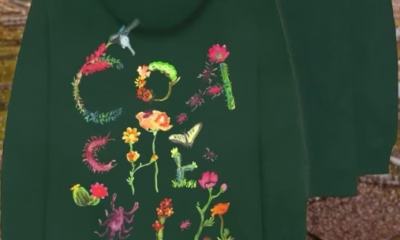
 ENTERTAINMENT2 months ago
ENTERTAINMENT2 months agoWhat Are Coachella Co-Chairs: The Visionaries Behind the Iconic Festival

